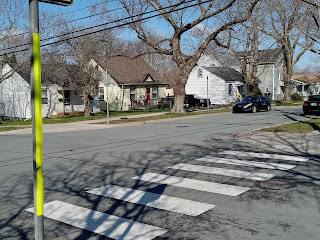The evidence of the housing crisis in Nova Scotia is as close as our neighborhood park. This crisis has been building for many years. This article reviews some analysis and proposals from a few years ago.
Michal Rozworski writing in Policynote, in 2019, locates the roots of our housing crisis in austerity, debt and extreme speculation.
In 1993, the last federal budget tabled by Brian Mulroney’s Progressive Conservative government ended all new federal funding for social housing construction outside of First Nations reserves. The feds were out of the business of creating new social housing, as they put it. This was a marked change from previous decades when the federal government helped finance about 20,000 units of social housing per year—from direct public housing in the 1960s and into the ‘70s to non-profit and co-op housing in the 1980s. In most provinces outside BC and Quebec, provincial governments did not pick up the slack following the 1993 announcement.
With the sudden imposition of social housing austerity, the Canada Mortgage and Housing Corporation (CMHC) shifted from homebuilder to mortgage insurer. The move away from direct and indirect public provision only further solidified long-standing economic and cultural pressures toward home ownership. And with this move the federal government only accelerated the transformation of housing from human necessity into investment good, to be supplied almost exclusively by the private sector. (Rozworski, 2019)
Joel Roberts reporting for the Breach, in 2021, suggests that fixing Canada’s housing crisis will require bold socialist politics. He suggests that politicians have finally taken note of the crisis. But they aren’t offering real change.
Canada’s housing crisis demands bold transformation, and a good place to start would be dramatically increasing federal spending on social housing whose rent is geared to income. That would provide immediate relief for the hundreds of thousands on waiting lists.
Furthermore, we desperately need a large-scale community-based land acquisition strategy based on sustainable living, not returns for investors. The strategy should empower community-based land trusts to create permanently affordable, energy-efficient, community-oriented rental housing en masse. If the federal government can find $150 billion to buy government-insured mortgages during the pandemic, it should have no trouble financing this transformation of rental housing.
Beyond a major revitalization of the social and community housing sector, we also need robust inclusionary zoning targets for private-sector housing, stronger rental protections for tenants, and emergency funding for shelters and transitional housing operations.
But what politicians are hesitant to tell you is that the housing crisis goes beyond housing. If we are to address the affordability crisis in rental markets, house prices will likely fall. More bold housing policies are thus unlikely to find much favour among homeowners who increasingly rely on rising prices to secure their retirement or to access further bank credit. As the Parliamentary Secretary on Housing put it in a recent interview: “We know that Canadians rely on homeownership to secure their place in the economy.” (Roberts, 2021)
Alex Cooke of Global News , in 2021, asked how did Nova Scotia get to the point where there are hundreds of people at night with no place to go?
The answer to that question is multi-faceted, says Jeff Karabanow, and the issue has been decades in the making.
Karabanow, a professor of social work at Dalhousie University, said advocates have been arguing for decades for municipal and provincial governments to create more affordable housing.
Now, people are paying the price for the “inactivity and inaction” around affordable housing.
“We’ve been very, very concerned for a long time that there is going to be an explosion on the streets if we couldn’t wrap our heads around some form of rapid-styled affordability housing that has supports embedded in it, that has to be taken by the province as the lead,” he said.
Add that to the stagnation of wages, the skyrocketing cost of living, and housing increasingly being seen as an investment opportunity rather than a social good, and we’ve created a “perfect storm” for the crisis we’re seeing today, he said — a crisis that shouldn’t exist in a rich country like Canada.
“We live in such a rich and fairly safe environment … especially Nova Scotia, where the numbers aren’t huge yet, we can really be providing everybody who needs, wants, some form of safe, stable housing. We could be providing that pretty easily,” he said.
“I think it’s become, for me, just a sense of inequity and injustice.” (Cooke, 2021)
The analysis of the housing crisis in these articles from 2019 and 2021 have identified the need for investment by government in affordable rental housing to rectify the inequity and injustice that continues to increase the number of homeless people in Nova Scotia.
References
Cooke, A. (2021, December 1). Nova Scotia's housing crisis: How the emergency has reached a boiling point - Halifax | Globalnews.ca. Global News. Retrieved September 5, 2023, from https://globalnews.ca/news/8413242/halifax-nova-scotia-housing-crisis-day-1-global-series/
Roberts, J. (2021, September 17). Fixing Canada's housing crisis will require bold socialist politics ⋆ The Breach. The Breach. Retrieved September 5, 2023, from https://breachmedia.ca/fixing-canadas-housing-crisis-will-require-bold-socialist-politics/
Rozworski, M. (2019, June 14). The roots of our housing crisis: Austerity, debt and extreme speculation. Policy Note. Retrieved September 5, 2023, from https://www.policynote.ca/the-roots-of-our-housing-crisis-austerity-debt-and-extreme-speculation/
.jpg)



No comments:
Post a Comment